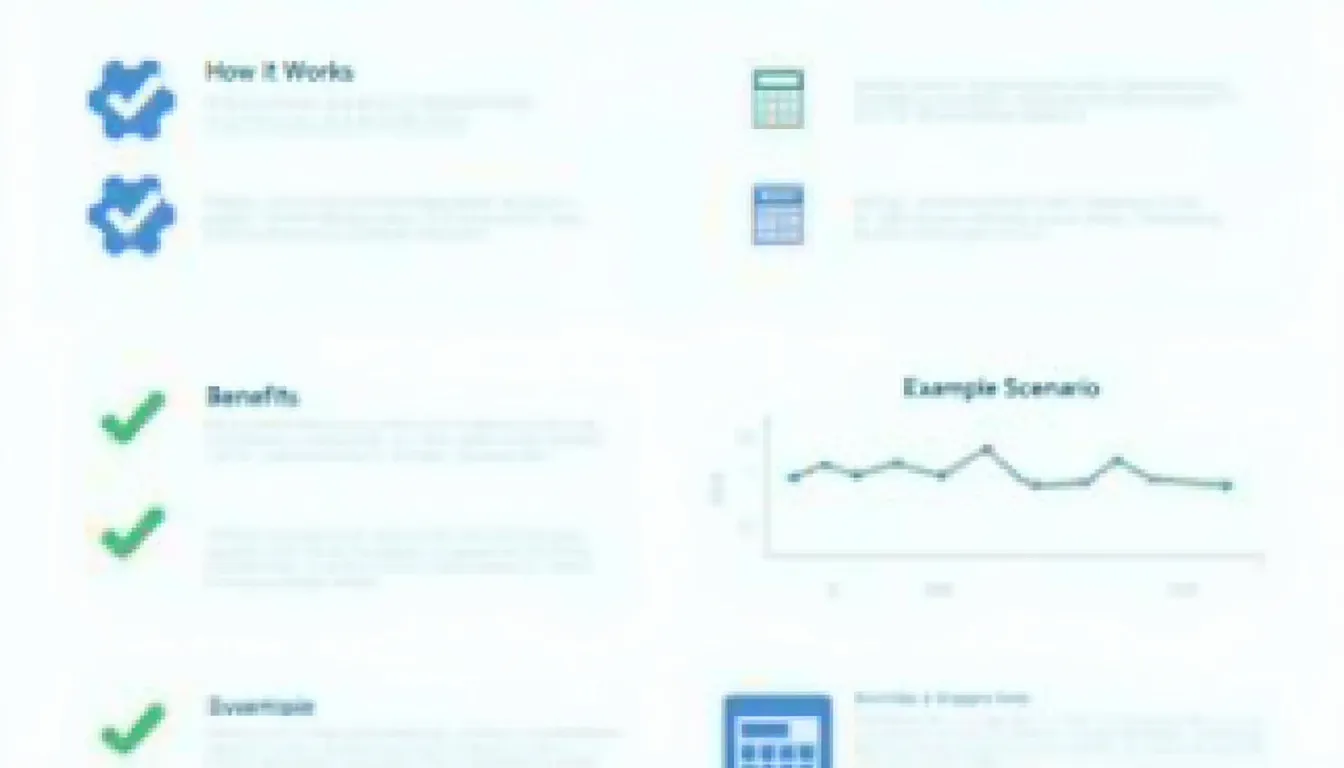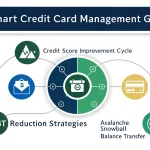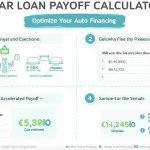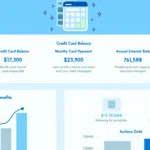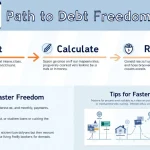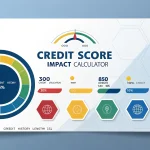Credit Card Payoff Calculator
Is this tool helpful?
How to use the tool
- Enter each card’s details.
- Sample 1: Balance $5,000 | APR 18.9 % | Min $120
- Sample 2: Balance $3,200 | APR 22.5 % | Min $90
- Add more cards. Click “Add Another Card” until every balance appears.
- Set your total monthly payment. Input a figure that at least covers the biggest minimum. Example values: $550 or $800.
- Press “Calculate”. The script applies the Debt Avalanche, updates the table, and draws the chart.
- Track progress. Review months-to-zero, interest paid, and see how bigger payments shorten the timeline.
Formulas the calculator uses
- Monthly interest: $$I = P rac{r}{12 \times 100}$$
- Required minimum payment per card: user-supplied field.
- Debt Avalanche allocation:
1. Pay every minimum.
2. Send all remaining budget to the card with highest r.
3. Repeat monthly until every P = 0.
Worked example (first month)
Inputs: $5,000 @ 18.9 % (min $120), $3,200 @ 22.5 % (min $90), monthly budget $550.
- Interest: Card 1 $78.75; Card 2 $60.00.
- Payments: Card 1 $120; Card 2 $430 (90 min + $340 extra).
- New balances: Card 1 $4,958.75; Card 2 $2,830.00.
- Total interest month 1: $138.75 | Principal cut: $411.25.
Quick-Facts
- Average U.S. credit-card APR: 22.77 % Q3 2023 (Federal Reserve G.19, 2023).
- Typical minimum payment formula: 1-3 % of balance (Experian, 2023).
- Debt Avalanche saves more interest than Snowball for identical budgets (CFPB, “Choosing a payoff strategy”).
- Credit-card interest compounds daily; calculator approximates monthly totals (NerdWallet, 2024).
FAQ
What is the Debt Avalanche method?
Debt Avalanche pays all minimums, then targets the highest-APR balance first. Interest charges drop quickly, cutting total repayment cost (CFPB, “Choosing a payoff strategy”).
Why must my monthly payment exceed the largest minimum?
If your budget falls below any card’s minimum, the issuer can apply late fees and penalty APRs, raising costs (CFPB Late Fees FAQ, 2023).
How fast can I clear $10,000 at 20 % APR with $600/month?
You would finish in about 20 months and pay roughly $1,650 in interest, assuming no new charges. Calculation follows the monthly interest formula above.
Does the tool account for daily compounding?
It uses a monthly approximation. Daily compounding adds a few dollars over long periods; results remain directionally accurate (NerdWallet, 2024).
Can I model a one-time lump-sum payment?
Yes—add the lump sum to your monthly payment for that month, click “Calculate,” then reset to your usual budget for later months.
Will closing a paid card hurt my credit?
Closing reduces available credit and can raise utilization, lowering scores short-term (FICO, Credit Education, 2023). Keep the zero-balance account open when possible.
Important Disclaimer
The calculations, results, and content provided by our tools are not guaranteed to be accurate, complete, or reliable. Users are responsible for verifying and interpreting the results. Our content and tools may contain errors, biases, or inconsistencies. Do not enter personal data, sensitive information, or personally identifiable information in our web forms or tools. Such data entry violates our terms of service and may result in unauthorized disclosure to third parties. We reserve the right to save inputs and outputs from our tools for the purposes of error debugging, bias identification, and performance improvement. External companies providing AI models used in our tools may also save and process data in accordance with their own policies. By using our tools, you consent to this data collection and processing. We reserve the right to limit the usage of our tools based on current usability factors.
